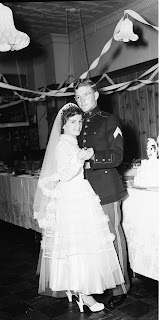So this isn't a terribly substantial post, but it's something I've wanted to do for a long time. The semester is coming to an end and I find myself incredibly busy, so this is the relatively simple project that is getting tackled this month. I put together all the photos of couples in my family tree. Many are aunts and uncles or cousins, but several are my direct ancestors. They are arranged in chronological order.
Mary Elizabeth Redding & Russell Howard McKee
married on October 13, 1852
James Wilkinson Gammon & Armilda Eliza Myers
married on November 19, 1852 in Monroe, IA
Isaac Newton Morrison & Lydia Josephine Gammon
married in December 1879 in Centerville, IA
Anna Mary Seufer & Newton Franklin Gammon
married on February 14, 1880 in Decatur County, IA
Katharine Rebecca Wilson & John Overington
married on November 5, 1889 in Philadelphia, PA
married on November 16, 1903 in Philadelphia, PA
Walter Smart McKee & Willie May Maxson
Albert Clate Gammon & Abigail Ruth Lester
married on January 1, 1907 in Ringgold County, IA
James Mathias Gammon & Carrie Bernice McKee
married on November 9, 1921 in Los Angeles, CA
Edgar Percival Jones and Claudia Overington
Howard McKee Gammon & Claudia Overington Newman
married on June 3, 1944 in Roswell, NM
Gisele & Walter Leonard McKee
Jack Leroy Upper & Claudia Overington Reid
married in 1950
Shirley Bubadias & Victor Carl Fetzer
married on August 2, 1953 in Neptune, NJ
Jim Gammon & Wanda Starnes
married on November 25, 1974 in Bel Air, MD (shown)
and on July 16, 1983 in Belmar, NJ





























.jpg)

